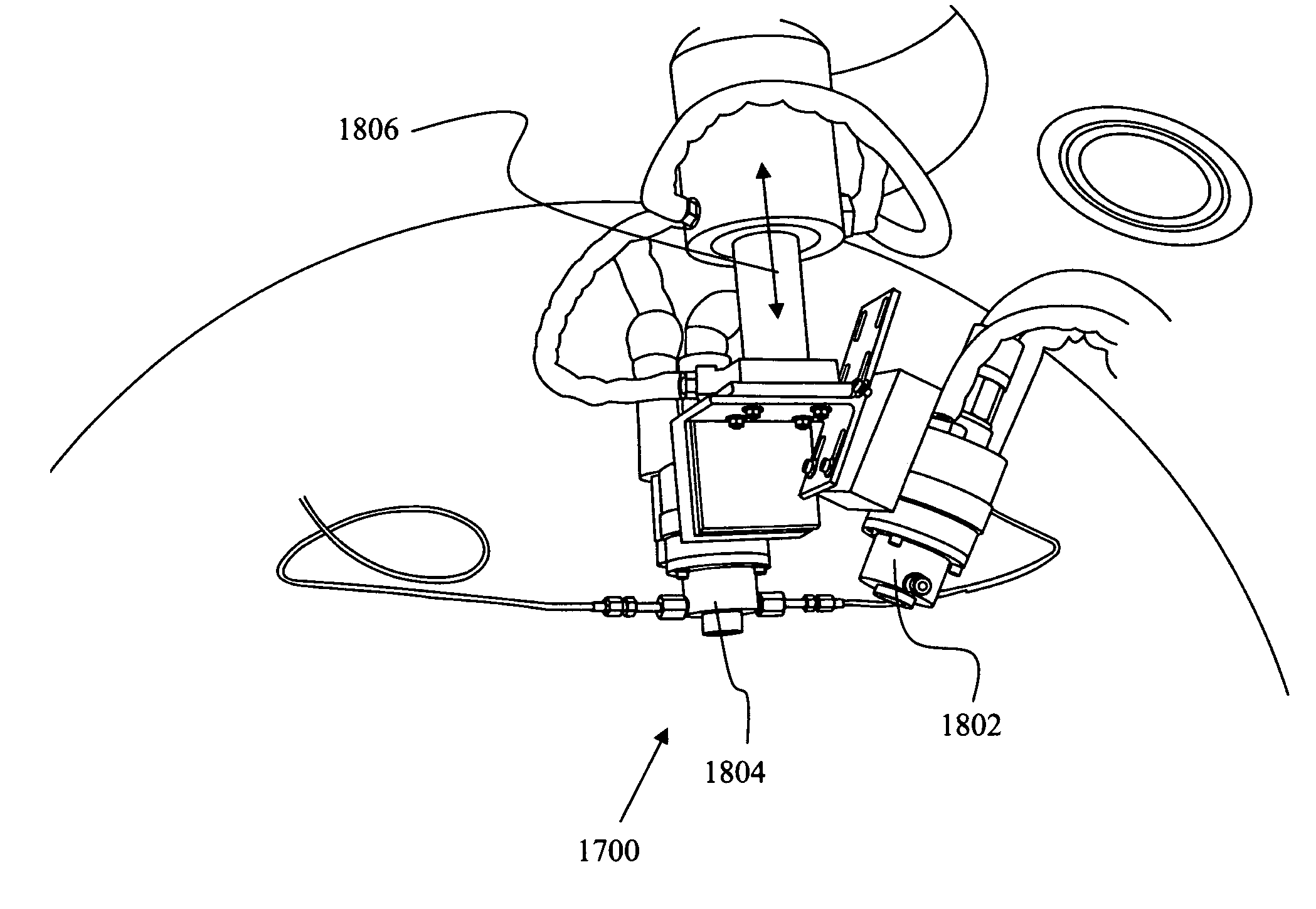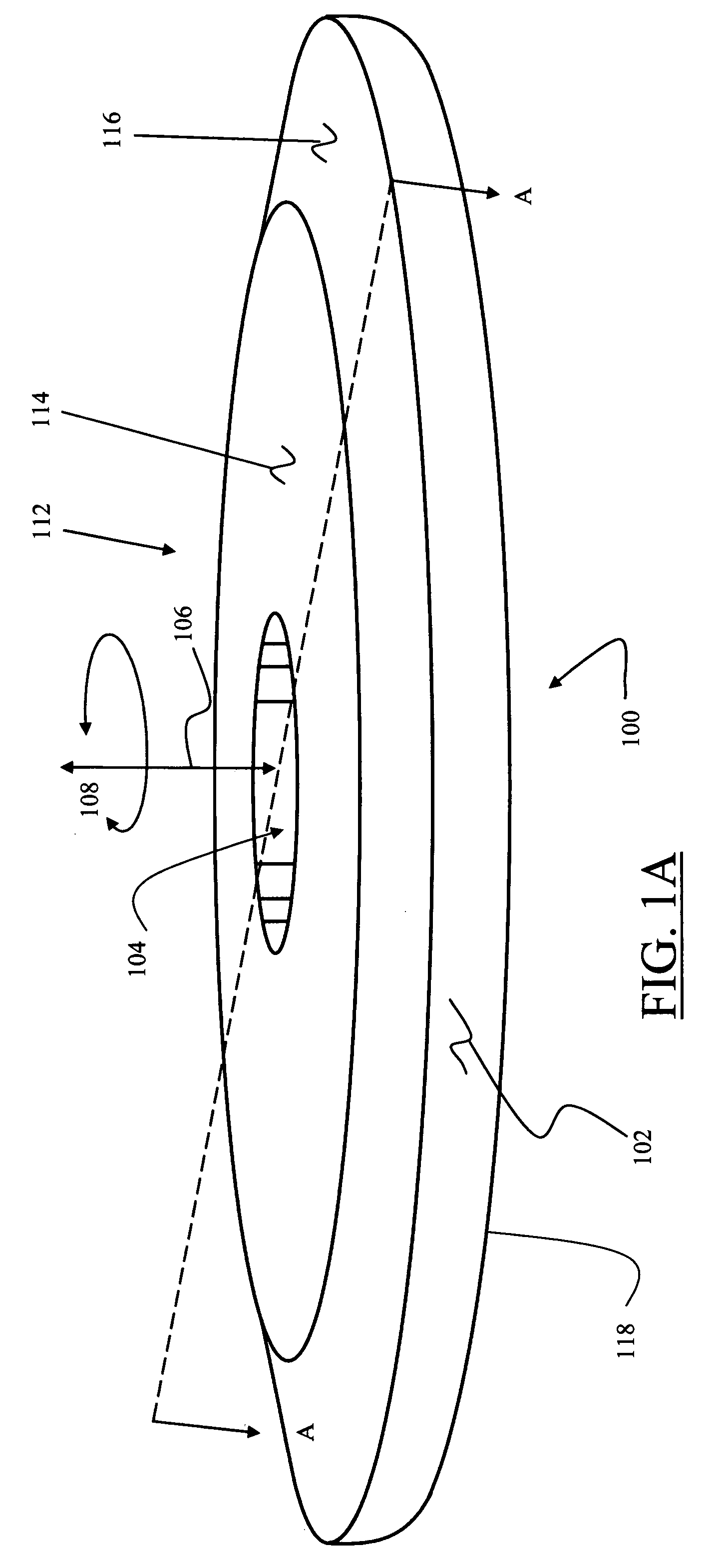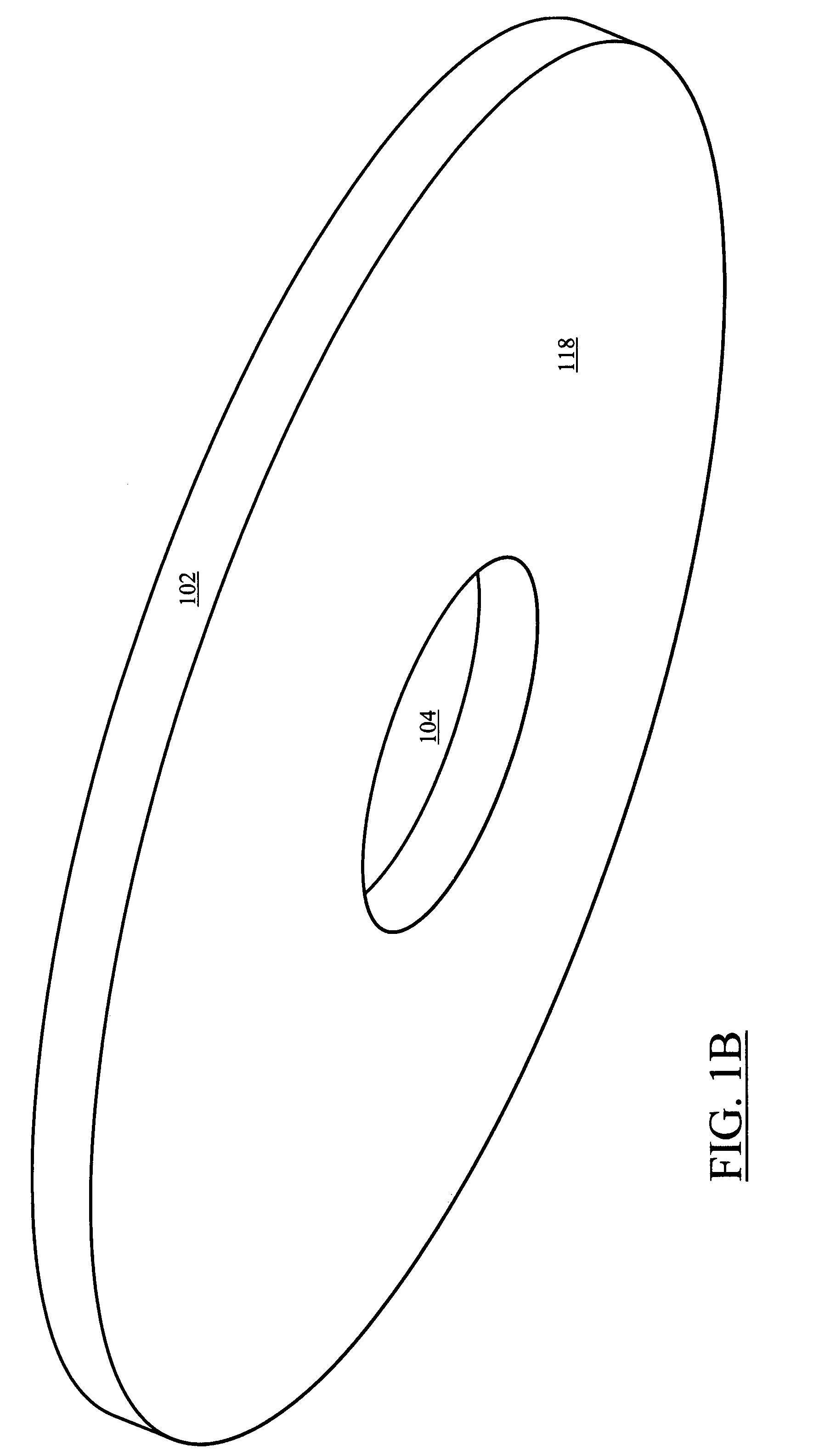High density low pressure plasma sprayed focal tracks for X-ray anodes
a low-pressure plasma and focal track technology, applied in the field of medical diagnostic equipment, can solve the problems lowering the velocity, and failing to duplicate the results of those skilled in the art, and achieve the effect of reducing the pressure of the vacuum chamber
- Summary
- Abstract
- Description
- Claims
- Application Information
AI Technical Summary
Benefits of technology
Problems solved by technology
Method used
Image
Examples
example 1
[0219]Base 100 used was a 4″¾″ thick TZM disc[0220]First lowering of pressure at 400 micron vacuum[0221]Backfill with argon to 30 Torr[0222]Negative Transferred Arc Sputter Clean at 10″ 2 KW[0223]Heat disc to above 1400° C.[0224]Deposit Tungsten 5% Rhenium Powder at 43 gr / min[0225]Helium 200 psi at 300 SCFH[0226]Argon 150 psi at 200 SCFH (functional acts 310 and 320 of FIG. 3)[0227]Plasma arc power of 100-112 KW[0228]Total Time of coating cycle 7 minutes[0229]Total thickness of focal track 0.052″
The coating structure is shown in FIG. 27. An equiaxed structure with a grain size of 10-20 microns was generated. The density of the coating measured using Archimedes technique is 96.5% of theoretical heat treatment in vacuum at 1600° C. for approximately 1-4 hours lead to densities of 97.5% without altering substantially the grain size.
example 2
[0230]Base used was 8″ TZM disc ¾″ thick[0231]Coating material Tungsten 10% Rhenium
Similar parameters as example 1 were used with the exception that the substrate temperature during deposition was maintained at 1200° C. and the deposition time was extended to 17 minutes to accommodate the larger area to be coated. The coating structure obtained is that of FIG. 26 which shows partial recystallization of the coating particles as they form the coating. The piece was heat treated at 1700° C. for approximately 4 hours and Hot Isostatic Pressed (HIP) at 28,000 psi, 1800° C. for about 4 hours. The resulting structure after heat treatment at 1700° C. is shown in FIG. 28. The after heat treat the grains were equiaxed and measured from 10-20 microns. The structure after HIP is shown in FIG. 29. The equiaxed grains measured from between 20-45 microns. The density of the HIPPED structure was found to be at a 98.5% minimum.
PUM
| Property | Measurement | Unit |
|---|---|---|
| particle size | aaaaa | aaaaa |
| particle size | aaaaa | aaaaa |
| pressure | aaaaa | aaaaa |
Abstract
Description
Claims
Application Information
 Login to View More
Login to View More - R&D
- Intellectual Property
- Life Sciences
- Materials
- Tech Scout
- Unparalleled Data Quality
- Higher Quality Content
- 60% Fewer Hallucinations
Browse by: Latest US Patents, China's latest patents, Technical Efficacy Thesaurus, Application Domain, Technology Topic, Popular Technical Reports.
© 2025 PatSnap. All rights reserved.Legal|Privacy policy|Modern Slavery Act Transparency Statement|Sitemap|About US| Contact US: help@patsnap.com



